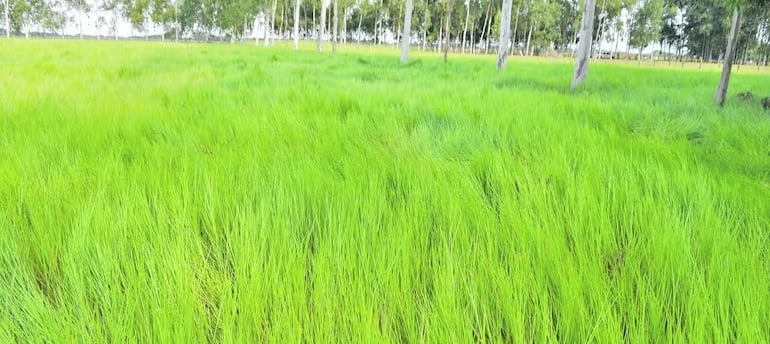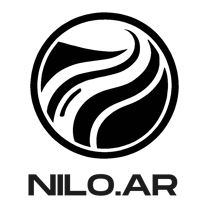Revolution in livestock farming: nilo grass
Silvana Ferrari Usandizaga
2/18/20252 min read


Introduction to Nilo Grass (Acroceras macrum)
Nilo Grass, scientifically known as Acroceras macrum, is a forage plant that has gained relevance in livestock farming, particularly in agricultural systems where soils suffer from waterlogging issues. This species is characterized by its rapid growth and dense vegetative cover, making it an ideal choice for improving forage productivity under adverse conditions. Its deep root system not only stabilizes the soil but also allows the plant to access nutrients that other species cannot utilize.
One of the main advantages of Nilo Grass is its remarkable adaptation to poorly drained environments. Unlike many forage species that require optimal moisture conditions, Acroceras macrum thrives in saturated soils, enabling it to grow in flood-prone areas. Additionally, its resistance to pests and diseases common in these ecosystems positions it as a viable and sustainable alternative for livestock farmers.
Integrating Nilo Grass into sustainable livestock practices is essential, as it provides high-quality forage for cattle nutrition. Its nutritional profile enhances digestibility and nutrient absorption, contributing to improved meat and milk production. This not only optimizes livestock yields but also combats soil degradation and promotes biodiversity in grazing areas.
Benefits for Livestock Farming
Nilo Grass stands out for its fast growth, reaching significant heights in short periods, ensuring abundant forage even in challenging soil conditions. Its high forage yield and balanced fiber-to-protein ratio make it a fundamental component of the diet for cattle, sheep, and goats, increasing daily weight gain and enhancing milk quality.
Propagation and Management
This species propagates efficiently through stolons, which emerge from the main stem and develop new roots and shoots. To establish a plantation, selecting healthy stolons from vigorous mother plants is recommended. Proper land preparation is crucial: the area should be cleared of weeds and crop residues, followed by minimal tillage and planting of stolons during the wettest months to promote root establishment. Post-planting management is essential, including controlled irrigation, fertilization with slow-release products, and integrated pest and weed control.
Implementation in Livestock Farms
To optimize animal production in waterlogged soils, it is essential to analyze and prepare the soil adequately, assessing pH levels and available nutrients. Planting should take place during favorable seasons, preferably in spring, using high-quality material. Success stories from regions in Africa and the wetlands of Ecuador have demonstrated that rotational grazing and proper management can maintain a steady forage supply, translating into improved milk and meat production. Similarly, in Argentina’s arid regions, Nilo Grass has contributed to the recovery of degraded soils, positively impacting livestock production.
Environmental Impact and Sustainability
The cultivation of Nilo Grass in waterlogged soils has a positive environmental impact. This species improves soil structure, increases water retention capacity, and reduces erosion, which is crucial in flooded areas. Additionally, by creating a habitat for various fauna and flora species, it promotes biodiversity and helps mitigate climate change through CO₂ capture during photosynthesis. Its implementation encourages sustainable livestock practices by reducing the need for agrochemicals and optimizing water resource use.
Conclusions and Future Perspectives
Acroceras macrum is emerging as a key option for livestock farming in waterlogged soils. Its rapid propagation through stolons, adaptability to high humidity conditions, and positive impact on soil health make it essential for improving forage productivity and the sustainability of agricultural systems. Research into its genetic improvement and the integration of sustainable management practices open new opportunities to address climate change challenges and optimize livestock production.
Pasto Nilo
Biotecnología para el desarrollo agrícola sostenible.
Servicios
Contacto
info@nilo.ar
+54 9 3794 900104
© 2025. All rights reserved.
